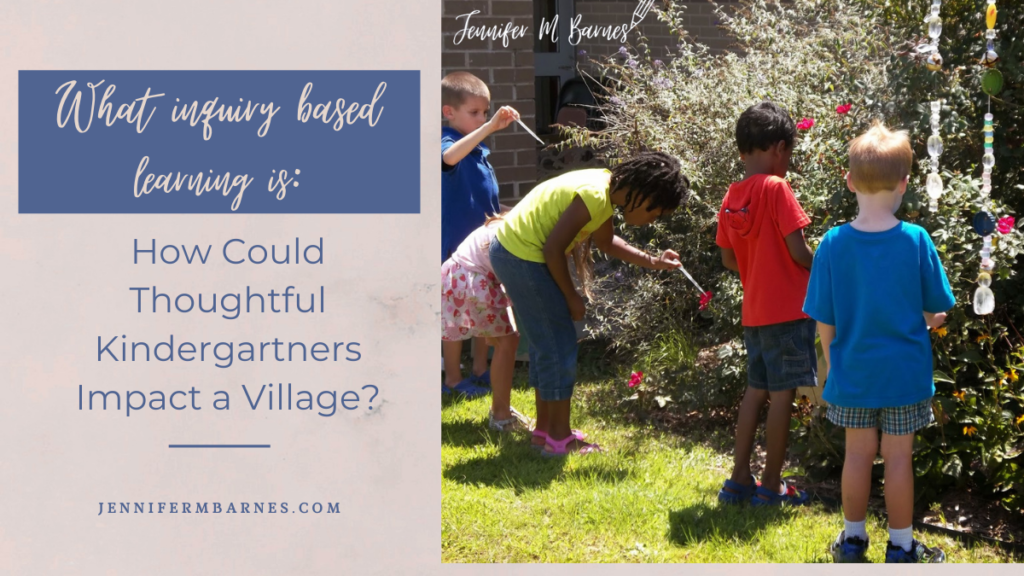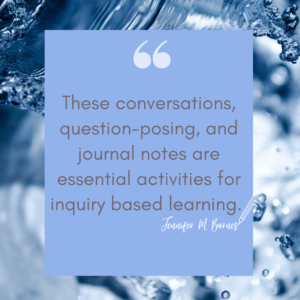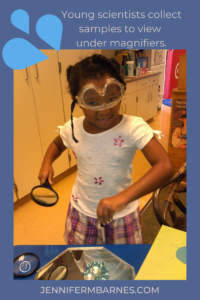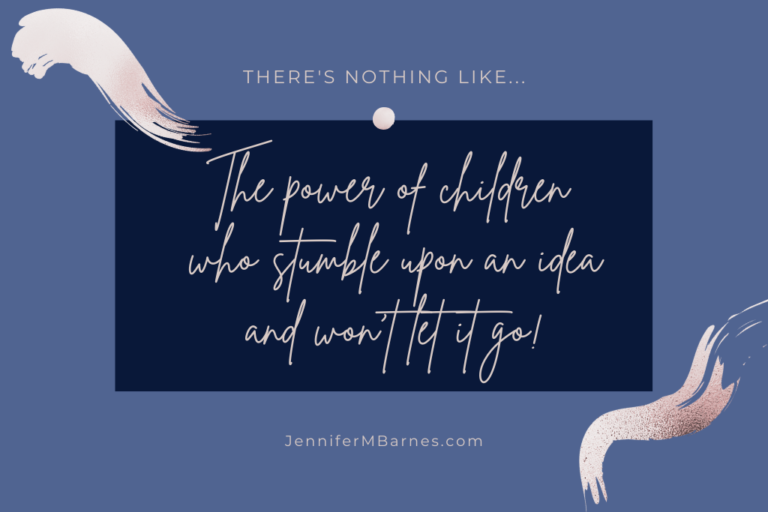Join my kindergartners as they discover what inquiry based learning is.
It started with a simple water dropper on the first day of kindergarten.
Shuffling twenty-two droppers into outstretched hands, I asked the kids to explore the garden using the droppers and pointed to some scattered water buckets. They rushed off, excited to be first to dunk their hands in the cool water. Some smushed the rubber ends, squealing as water streaked out. Others, surprised to see nothing happen, questioned “Hey, how’d you get water up there?”

This, my friend, is what inquiry based learning is all about.
Give young children some basic tools, time and space to learn, and start investigating. In time, you’ll pull everyone back together to refine pipette techniques, reiterate the state standards on water, and reflect on the collaborative learning. But for now, enjoy authentic, joyful learning. Be sure to capture it through photography and kidwatching notes, authentic tools of assessment.
Collaborative learning will fill your camera lens: heads peeking over shoulders, eyes squinting in the sunlight, bodies leaning in to watch droplets race down window panes. From leaves and tree trunks to bridges and handrails, little ones will pause and watch the trails they take. Then, they’ll zoom in on their friends’ streaks, wondering what transpired and how to make their water do the same.
That was the beginning. Our first inquiry on our first day.
We gathered to return our droppers, squeezing out one last drop to evaporate on the hot sidewalk. A few of our child scientists shared how their pipettes worked and where the best water droplet trails could be made. Others smiled and told colorful stories. We all made plans for new things to try tomorrow.
As they headed for dismissal, smiling and happy on their first day of learning, they knew they were indeed investigating something new and wonderful.
Inquiry activities resumed on the second day of school and kept building…
Early the next morning, we flipped through carefully-chosen photographs on the large board, reminiscing on that powerful experience. Stopping at select pictures, we asked individuals to explain what they had been thinking at that moment.
Then, I read children’s quotes from my kidwatching notes. Others shared their thoughts and ideas about their knowledge of water from our investigation, as well as their cooking assistance, and even bathtub routines at home. A few questions surfaced, which we jotted down in our class journal. These conversations, question-posing, and journal notes are essential activities for inquiry based learning.

Inquiry in reading and writing workshops
Next, I introduced another component in an inquiry based classroom: quality, nonfiction books on all reading levels. We immersed ourselves in books, beginning with Frank Asch’s gorgeous watercolor paintings in Water and George Ella Lyon’s All the Water in the World.
The exquisite illustrations from both texts encouraged the children to create their own flowy, colorful lines, filling pages of stapled books during their Writing Workshop time. Their newfound understanding of water graced the pages:
Water droppers make cool tracks that go down.
You can’t hold water in your hand.
All people need water.
Inquiry based learning for science and social studies
Later during our inquiry based learning for science, we continued our plans with the water droppers, eventually adding goggles and vials. We had a fountain in our garden, a water feature on our playground, and a neighborhood pond. So, we gathered some materials and off we went to explore all the water, bringing back samples to view later under magnifiers.

The children were truly immersed in their water studies, paying attention to our drinking fountains and sinks, their water at home and in our community, and the globe and maps around our classroom. “Look at all the blue! We’ve got water everywhere.” But, as they learned the difference in salt water vs. fresh water and how some landlocked countries didn’t have as much access, they began thinking more critically about the world.
Then, one special day…
during our class conversation, our teaching assistant shared about some family members who lived in Nicaragua. In their village, the schoolchildren had no access to fresh water. Our children truly could not understand how children everywhere didn’t just get water like we did. They were compelled to do something. Although we couldn’t fix the whole world, maybe they figured we could help just this one place.
Before I knew it, they were begging me, “You’ve just got to do something about this, Mrs. Barnes! Think of it. This school in Nicaragua has NO water! You have to do something!”
I looked right back at them and reasoned, “Well, you all know way more people than I do. I bet you can do something about it.”

Their first idea was to just scream it from the highest place we could. Seriously.
Once they tried that a couple of times, they realized they’d need something more. In our first movie scene, you’ll see their rendition of screaming the news from the highest point. (Our bridge in the garden was the highest place they could figure around our small school. I’ll never look at that first scene without thinking about the power of children who stumble upon an idea and won’t let it go…)
From there, it became history. I told them they really needed to let everyone know important facts and engagements we had shared about water before asking for any money. So, they did.
They tackled their plan with gusto.
They worked for days to figure out the technology and the best ways of showcasing all our knowledge on water. Thank goodness, I had one of the best early childhood interns ever who committed herself to help us create this dream. (She’s gone on to become an incredible kindergarten teacher herself.) And my teaching assistant who started the conversation? She excitedly jumped right in with the children’s ideas, too.
The children helped to plan everything for the movie:
Who would stand where?
What artifacts would we share?
How would we find all the buckets for the children across the world scene in the garden?
And they made other plans:
The children dreamed up a process for collecting money and promised they would learn to count it all up. (Just in case you wondered if inquiry based learning in mathematics was effective.)
They would give people options so parents didn’t feel like they had to send money in with no work from the kids. (Besides digging through sofa cushions and under car seats!)
And they decided for sure on a way to honor those people who chose to give – a present! After all, there’s nothing like homemade cards.
Clearly, we learned as inquirers. We became artists and scientists, readers and writers, definitely social scientists and mathematicians. As movie-makers, we hesitantly watched and worked. Then we released our masterpiece into the world.
Gratefully, we cheered as the money rolled in – from counting pennies on the first day to our final amount of hundreds of dollars. How excited we were to send the money to that small village to fund their new water pipes and bring fresh water to their school. And how different our learning became – when we realized that a bunch of five- and six-year-olds could indeed change the world! Truly, a study in what inquiry based learning is all about.
Interesting in making a few simple changes in your teaching right now? Here are a few steps to implement inquiry based learning: Services – Jennifer M. Barnes (jennifermbarnes.com)
If you’d like more information about experiential learning activity types across middle and high school, please click here: How to Modify the Experiential Learning Process for Any Age Group – Experiential Learning Depot

Pingback: Your School Garden: How Can You Actually Live Your Best Life There this Winter? - Jennifer M. Barnes
Pingback: Five Incredible Kindergarten Birthday Activities That Bring Homes & Schools Together - Jennifer M. Barnes